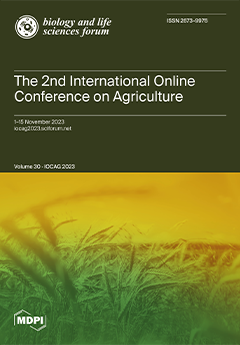Journal Description
Biology and Life Sciences Forum
Biology and Life Sciences Forum
is an open access journal dedicated to publishing findings resulting from conferences, workshops, and similar events, in all areas of biology, life sciences and at the interface of related disciplines. The conference organizers and proceedings editors are responsible for managing the peer-review process and selecting papers for conference proceedings.
Latest Articles
Statement of Peer Review
Biol. Life Sci. Forum 2023, 24(1), 16; https://doi.org/10.3390/IECT2023024016 - 12 Apr 2024
Abstract
In submitting conference proceedings to Biology and Life Sciences Forum, the volume editors of the proceedings certify to the publisher that all papers published in this volume have been subjected to peer review administered by the volume editors [...]
Full article
(This article belongs to the Proceedings of The 2nd International Electronic Conference on Toxins)
Open AccessProceeding Paper
Variability of Allergen-Based Length Polymorphism of Glycine max L. Varieties
by
Adam Kováčik, Jana Žiarovská and Lucia Urbanová
Biol. Life Sci. Forum 2024, 30(1), 20; https://doi.org/10.3390/IOCAG2023-16879 - 11 Mar 2024
Abstract
Food allergies are an increasingly common phenomenon across all age groups and can be called an epidemic of modern times. Legumes are a nutritionally attractive crop because of their high protein content and well-balanced nutritional value. However, in addition to nutritionally valuable components,
[...] Read more.
Food allergies are an increasingly common phenomenon across all age groups and can be called an epidemic of modern times. Legumes are a nutritionally attractive crop because of their high protein content and well-balanced nutritional value. However, in addition to nutritionally valuable components, they contain a relatively high amount of antinutritional factors such as glycosides, lectins, inhibitors of digestive enzymes, and antinutritional proteins, including allergens. Different genomic-based analyses of allergen-coding parts are relevant in research into legume gene resources. Here, a total of thirty different soybean varieties were analyzed for polymorphism based on the specific homologous sequences of genes for vicilin and profilin; products of both of these genes belong to allergenic molecules of this species. A total of 16 different amplicons were obtained when profilin was used as marker and 17 different amplicons were obtained when vicilin was used. Comparing both of the used techniques, vicilin provided more polymorphic profiles, but in five of analyzed varieties no amplicons were obtained. Profilin fingerprints provided a higher degree of similarity coefficients among individual varieties of the soybean. Both of used PCR-based techniques proved to be applicable for genomic-based screening of allergen homologs in the genetic resources of Glycine max L.
Full article
(This article belongs to the Proceedings of The 2nd International Online Conference on Agriculture)
►▼
Show Figures
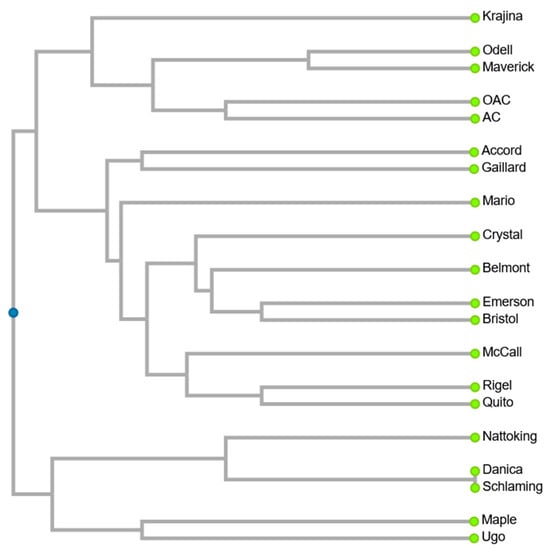
Figure 1
Open AccessProceeding Paper
A Light-Weight CNN Based Multi-Task Architecture for Apple Maturity and Disease Classification
by
Li Zhang and Jie Cao
Biol. Life Sci. Forum 2024, 30(1), 19; https://doi.org/10.3390/IOCAG2023-16881 - 11 Mar 2024
Abstract
Quickly and accurately judging the quality grades of apples is the basis for choosing suitable harvesting date and setting a suitable storage strategy. At present, the research of multi-task classification algorithm models based on CNN is still in the exploration stage, and there
[...] Read more.
Quickly and accurately judging the quality grades of apples is the basis for choosing suitable harvesting date and setting a suitable storage strategy. At present, the research of multi-task classification algorithm models based on CNN is still in the exploration stage, and there are still some problems such as complex model structure, high computational complexity and long computing time. This paper presents a light-weight architecture based on multi-task convolutional neural networks for maturity (L-MTCNN) to eliminate immature and defective apples in the intelligent integration harvesting task. L-MTCNN architecture with diseases classification sub-network (D-Net) and maturity classification sub-network (M-Net), to realize multi-task discrimination of the apple appearance defect and maturity level. Under different light conditions, the image of fruit may have color damage, which makes it impossible to accurately judge the problem, an image preprocessing method based on brightness information was proposed to restore fruit appearance color under different illumination conditions in this paper. In addition, for the problems of inaccurate prediction results caused by tiny changes in apple appearance between different maturity levels, triplet loss is introduced as the loss function to improve the discriminating ability of maturity classification task. Based on the study and analysis of apple grade standards, three types of apples were taken as the research objects. By analyzing the changes in apple fruit appearance in each stage, the data set corresponding to the maturity level and fruit appearance was constructed. Experimental results show that D-Net and M-Net have significantly improved recall rate, precision rate and F1-Score in all classes compared with AlexNet, ResNet18, ResNet34 and VGG16.
Full article
(This article belongs to the Proceedings of The 2nd International Online Conference on Agriculture)
►▼
Show Figures

Figure 1
Open AccessProceeding Paper
Legal Protection of New Plant Varieties: Lamiaceae Patent Cases Based on International Patent Classification
by
Reda El Boukhari and Ahmed Fatimi
Biol. Life Sci. Forum 2024, 30(1), 18; https://doi.org/10.3390/IOCAG2023-16882 - 11 Mar 2024
Abstract
This study aims to analyze patents relating to new plant varieties of Lamiaceae, a plant family recognized for the interest of these genera in the medicinal and aromatic fields. The study also seeks to identify the genera and species most exploited in
[...] Read more.
This study aims to analyze patents relating to new plant varieties of Lamiaceae, a plant family recognized for the interest of these genera in the medicinal and aromatic fields. The study also seeks to identify the genera and species most exploited in innovative applications. To identify the latest trends in this area, we systematically reviewed patents concentrating on new varieties of Lamiaceae. The relevant patent documents were identified within a specialized database using the International Patent Classification. The United States encompasses all plant patents in this area, and it is considered the leading jurisdiction. This is also confirmed by the American organizations, which led the way with the most applicants. The Lamiaceae genera concerned with the legal protection of new plant varieties comprise 23 genera. Among them are Plectranthus, Salvia, and Lavandula, which present 55.4% of total patent documents in this area. The essential objective claimed by the majority of patent documents analyzed in this study is ornamental. Furthermore, other inventive purposes are also claimed in the patent documents, but with a low percentage, such as genetic engineering, the selection of a compound, etc.
Full article
(This article belongs to the Proceedings of The 2nd International Online Conference on Agriculture)
►▼
Show Figures

Figure 1
Open AccessProceeding Paper
A Diseased Three-Species Harvesting Food Web Model with Various Response Functions
by
Thangavel Megala, Thangaraj Nandha Gopal, Manickasundaram Siva Pradeep and Arunachalam Yasotha
Biol. Life Sci. Forum 2024, 30(1), 17; https://doi.org/10.3390/IOCAG2023-16876 - 11 Mar 2024
Abstract
The purpose of this work is to present a three-species harvesting food web model that takes into account the interactions of susceptible prey, infected prey, and predator species. Prey species are assumed to expand logistically in the absence of predator species. The Crowley–Martin
[...] Read more.
The purpose of this work is to present a three-species harvesting food web model that takes into account the interactions of susceptible prey, infected prey, and predator species. Prey species are assumed to expand logistically in the absence of predator species. The Crowley–Martin and Beddington–DeAngelis functional responses are used by predators to consume both susceptible and infected prey. Additionally, susceptible prey is consumed by infected prey in the formation of a Holling type II response. Both prey species are considered when prey harvesting is taken into account. Boundedness, positivity, and positive invariance are considered in this study. The investigation covers all the equilibrium points that are biologically feasible. Local stability is evaluated by analyzing the distribution of eigen values, while global stability is evaluated using suitable Lyapunov functions. Also, Hopf bifurcation is analyzed at the harvesting rate
(This article belongs to the Proceedings of The 2nd International Online Conference on Agriculture)
►▼
Show Figures
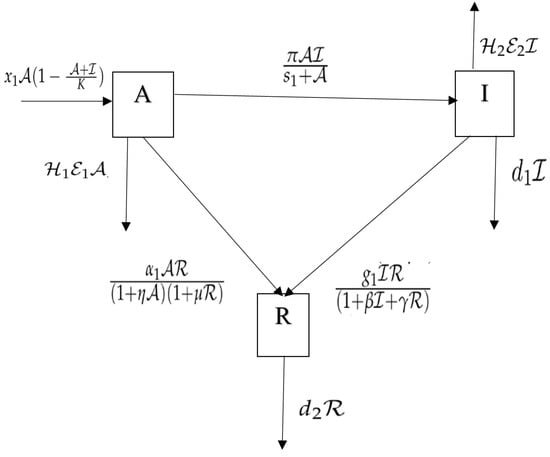
Figure 1
Open AccessProceeding Paper
Predicting Maturity of Coconut Fruit from Acoustic Signal with Applications of Deep Learning
by
Farook Sattar
Biol. Life Sci. Forum 2024, 30(1), 16; https://doi.org/10.3390/IOCAG2023-16880 - 11 Mar 2024
Abstract
This paper aims to develop an effective AI-driven method to predict the maturity level of coconut (Cocos nucifera) fruits using acoustic signals. The proposed sound-based autonomous approach exploits various deep learning models, including customized CNN pretrained networks, i.e., the ResNet50, InceptionV3,
[...] Read more.
This paper aims to develop an effective AI-driven method to predict the maturity level of coconut (Cocos nucifera) fruits using acoustic signals. The proposed sound-based autonomous approach exploits various deep learning models, including customized CNN pretrained networks, i.e., the ResNet50, InceptionV3, and MobileNetV2, models for maturity level classification of the coconuts. The proposed study also demonstrates the effectiveness of various deep learning models to automatically predict the maturity of coconuts into three classes, i.e., premature, mature, and overmature coconuts, for inspecting the coconut fruits by using a small amount of input acoustic data. We use an open-access dataset containing a total of 122 raw acoustic signals, which is the result of knocking 122 coconut samples. The results achieved by the proposed method for coconut maturity prediction are found to be promising, which enables producers to accurately determine the yield and product quality.
Full article
(This article belongs to the Proceedings of The 2nd International Online Conference on Agriculture)
►▼
Show Figures

Figure 1
Open AccessEditorial
Statement of Peer Review
by
Gianni Bellocchi
Biol. Life Sci. Forum 2023, 27(1), 60; https://doi.org/10.3390/blsf2023027060 - 07 Mar 2024
Abstract
In submitting conference proceedings to Biology and Life Sciences Forum, the volume editors of the proceedings certify to the publisher that all papers published in the volume have been peer-reviewed by the volume editors [...]
Full article
(This article belongs to the Proceedings of The 3rd International Electronic Conference on Agronomy)
Open AccessEditorial
Preface: The 3rd International Electronic Conference on Agronomy
by
Gianni Bellocchi
Biol. Life Sci. Forum 2023, 27(1), 59; https://doi.org/10.3390/blsf2023027059 - 07 Mar 2024
Abstract
The 3rd International Electronic Conference on Agronomy (IECAG 2023) took place from 15 October to 30 October 2023, organized by Agronomy in collaboration with related open-access journals (Agriculture, Plants, and Horticulturae) of the academic open-access publisher MDPI (Multidisciplinary Digital Publishing Institute) [...]
Full article
(This article belongs to the Proceedings of The 3rd International Electronic Conference on Agronomy)
►▼
Show Figures
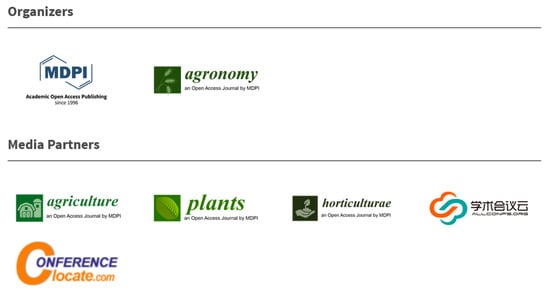
Figure 1
Open AccessEditorial
Preface: The 3rd International Electronic Conference on Nutrients
by
Maria Luz Fernandez, M. Luisa Bonet, Francisco J Pérez Cano and Egeria Scoditi
Biol. Life Sci. Forum 2023, 29(1), 28; https://doi.org/10.3390/blsf2023029028 - 07 Mar 2024
Abstract
The Third International Electronic Conference on Nutrients—Precision Nutrition and Nutrigenomics was held from 1 to 15 November 2023 [...]
Full article
(This article belongs to the Proceedings of The 3rd International Electronic Conference on Nutrients)
►▼
Show Figures
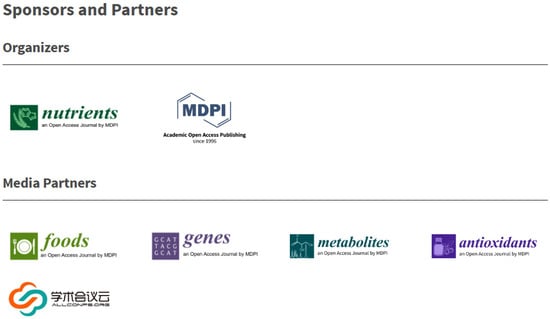
Figure 1
Open AccessEditorial
Statement of Peer Review
by
Maria Luz Fernandez, M. Luisa Bonet, Francisco J Pérez Cano and Egeria Scoditi
Biol. Life Sci. Forum 2023, 29(1), 27; https://doi.org/10.3390/blsf2023029027 - 07 Mar 2024
Abstract
In submitting conference proceedings to Biology and Life Sciences Forum, the volume editors of the proceedings certify to the publisher that all papers published in this volume have been subjected to peer review administered by the volume editors [...]
Full article
(This article belongs to the Proceedings of The 3rd International Electronic Conference on Nutrients)
Open AccessProceeding Paper
Effects of Calcium- and Seaweed-Based Biostimulants on Sweet Cherry Profitability and Quality
by
Marlene Santos, Carolina Maia, Inês Meireles, Sandra Pereira, Marcos Egea-Cortines, João Ricardo Sousa, Fernando Raimundo, Manuela Matos and Berta Gonçalves
Biol. Life Sci. Forum 2023, 27(1), 45; https://doi.org/10.3390/IECAG2023-15876 - 09 Jan 2024
Cited by 1
Abstract
Sweet cherry trees are one of the most important crops worldwide, producing fruits with high economic importance due to the nutritional value and bioactive properties of cherries, providing benefits to human health. Due to the currently unstable climatic conditions, cherry cracking has become
[...] Read more.
Sweet cherry trees are one of the most important crops worldwide, producing fruits with high economic importance due to the nutritional value and bioactive properties of cherries, providing benefits to human health. Due to the currently unstable climatic conditions, cherry cracking has become a significant problem, strongly affecting the quality and yield of cherry orchards. A cracking rate of 20–25% at harvest can render cherry production unprofitable, decreasing the commercial value of the fruit, as only the cracked ones can be sold to processing industries. This study aims to assess the impact of calcium- and seaweed-based biostimulant applications on sweet cherry quality and profitability in cv. Sweetheart. Applying 300 g hL−1 of calcium led to a significant 52% reduction in the cracking index and a substantial 136% increase in orchard yield. Similarly, applying 150 mL hL−1 of seaweed resulted in a 2% increase in fruit weight and a 3% decrease in the cracking index. Therefore, our findings suggest that calcium- and seaweed-based biostimulants could serve as novel and sustainable alternatives for orchard producers, enhancing cherry profitability and marketability.
Full article
(This article belongs to the Proceedings of The 3rd International Electronic Conference on Agronomy)
►▼
Show Figures
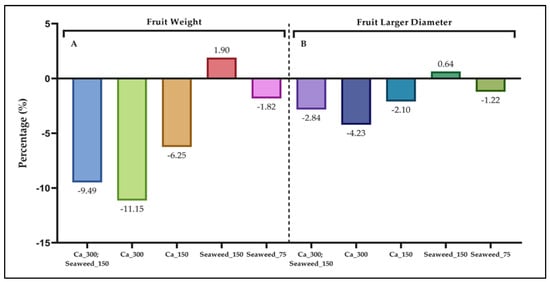
Figure 1
Open AccessProceeding Paper
A Study on the Antimicrobial Activity of Algae Extract: The Fucales Order Case
by
Aurora Silva, Maria Carpena, Stephanie Lopes Morais, Clara Grosso, Lucia Cassani, Frank Chamorro, Maria Fátima Barroso, Jesus Simal-Gandara and Miguel A. Prieto
Biol. Life Sci. Forum 2024, 31(1), 26; https://doi.org/10.3390/ECM2023-16695 - 09 Jan 2024
Abstract
Over the years, foodborne pathogens have caused countess health problems and massive financial losses. Therefore, an essential goal for the food industry is to prevent food contamination and the related foodborne illnesses as microbial contamination of food items during their acquiring and distribution
[...] Read more.
Over the years, foodborne pathogens have caused countess health problems and massive financial losses. Therefore, an essential goal for the food industry is to prevent food contamination and the related foodborne illnesses as microbial contamination of food items during their acquiring and distribution processes is still a hygienic issue. Moreover, there is an important movement leading to the pursuit of more natural and safe food supplies and ingredients with a special emphasis on the vegan and vegetarian community; as a result, there has been a resurgence in demand for natural and eco-friendly products as a replacement for synthetic ingredients. In this context, and due to their active substances, macroalgae stand out as they are known for possessing antibacterial qualities among other abilities. Because of this, the current study updates our understanding of microbial pollutants in the food industry and compiles the latest updates on the scientific reports on antimicrobial activity of the edible brown algae species with special attention to the algae Bifurcaria bifurcata, Fucus spiralis, and Ascophyllum nodosum. These species which belong to the Phaeophyceae class and order Fucales are reportedly rich in active compounds and are still an undervalued resource. So, the ability of algal extracts to stop the growth of various significant food pathogens is reviewed herein, while considering their advantageous effects on food safety and quality issues.
Full article
(This article belongs to the Proceedings of The 2nd International Electronic Conference on Microbiology)
►▼
Show Figures
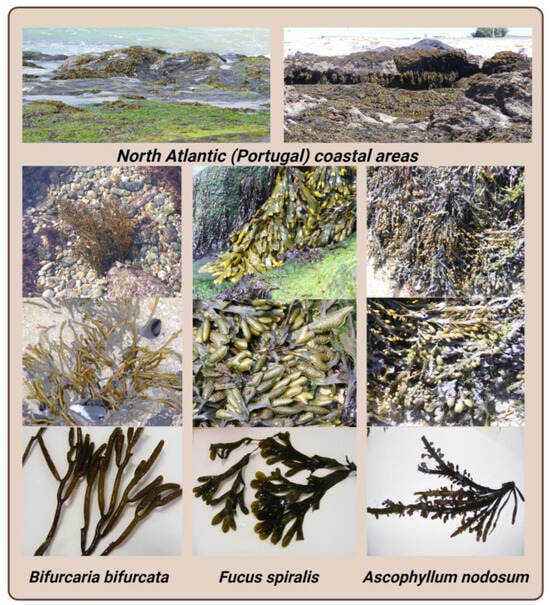
Figure 1
Open AccessProceeding Paper
Trends and Geographical Distribution of Diphtheria in Nigeria: A Re-Emerging Disease
by
Surayya Mustapha Salim and Fatima Muhammed Hamza
Biol. Life Sci. Forum 2024, 31(1), 22; https://doi.org/10.3390/ECM2023-16693 - 09 Jan 2024
Abstract
Diphtheria is a highly contagious and deadly vaccine–preventable bacterial infection that affects a person’s nose, throat, and occasionally the skin. Diphtheria is fatal in 5–10% of cases; however, the case fatality rate (CFR) can be as high as 20–40% among children and unvaccinated
[...] Read more.
Diphtheria is a highly contagious and deadly vaccine–preventable bacterial infection that affects a person’s nose, throat, and occasionally the skin. Diphtheria is fatal in 5–10% of cases; however, the case fatality rate (CFR) can be as high as 20–40% among children and unvaccinated adults. Currently, the number of diphtheria cases reported globally has being increasing gradually. Nigeria ranks number six in the list of countries by population with about 42.54% of its population below 14 years of age. Despite the availability of the antitoxin vaccine in the country, only 41.7% of children under 15 years of age are fully vaccinated, making the country more vulnerable to the disease. The study, therefore, aimed to examine the spread and trend of diphtheria in Nigeria since the major outbreak of the disease in December 2022. Data for the study were sourced from secondary sources. From December 2022 to January 2023, Nigeria recorded a total of 111 (42.1%) confirmed cases and 22 deaths, with a case fatality rate for confirmed/probable cases of 19.8% in four states. Out of the 111 confirmed cases, only a small percentage (10.8%) were vaccinated with the diphtheria toxin-containing vaccine. Additionally, the majority (91.9%) of the confirmed cases occurred in children aged 2–14 years. Since then, there has been a constant number of reported cases. As of 31 July 2023, the country recorded a total of 1534 confirmed cases in 11 states and 137 deaths, with a CFR of 8.9%. The majority (66.4%) of the confirmed cases occurred among children aged 1–14 years, with only 18.1% of the 1534 confirmed cases previously vaccinated. In this era of globalization, if prompt action is not taken, diphtheria will become a major threat not only to Nigeria but also globally.
Full article
(This article belongs to the Proceedings of The 2nd International Electronic Conference on Microbiology)
►▼
Show Figures
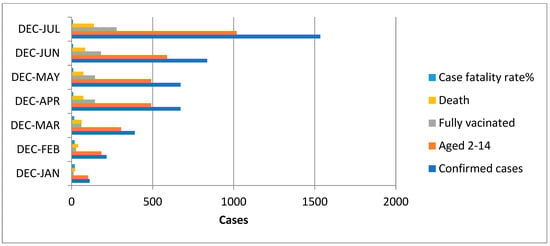
Figure 1
Open AccessProceeding Paper
Pseudogymnoascus destructans as the Agent of White-Nose Syndrome (WNS) in Bat Populations
by
Andreia Garcês and Isabel Pires
Biol. Life Sci. Forum 2024, 31(1), 20; https://doi.org/10.3390/ECM2023-16696 - 09 Jan 2024
Abstract
Pseudogymnoascus destructans is a psychrophilic fungus that causes white-nose syndrome (WNS), an emerging disease in North America. This fungus has caused unprecedented population declines. It has also been described in Europe and Asia, where it has not caused significant mortality. The first evidence
[...] Read more.
Pseudogymnoascus destructans is a psychrophilic fungus that causes white-nose syndrome (WNS), an emerging disease in North America. This fungus has caused unprecedented population declines. It has also been described in Europe and Asia, where it has not caused significant mortality. The first evidence of WNS in North America came from a photograph of a hibernating bat taken during the winter of 2005–2006 in a cave near Albany, New York. P. destructans develops when the body temperature decreases during winter hibernation. This fungus thrives in humid and cold conditions characteristic of caves. Infected bats can develop visible white fungal growth on the nose, ears, and wings, and awaken more frequently from torpor. It leads to physiologic changes that result in weight loss, dehydration, electrolyte imbalances, and the death of bats. The fungi can persist in the environments of underground bat hibernation sites and are believed to spread primarily by the natural movements of infected bats. Also, there is a strong possibility that it may also be transmitted by humans inadvertently carrying the fungus from cave to cave on their clothing and gear. WNS has a big impact on bat populations with high levels of mortality, particularly endangered species. Some populations will take many years to recover. The decline of bats also has an impact on the spread of diseases, since many species of bat feed on insect carriers of several pathogens.
Full article
(This article belongs to the Proceedings of The 2nd International Electronic Conference on Microbiology)
►▼
Show Figures
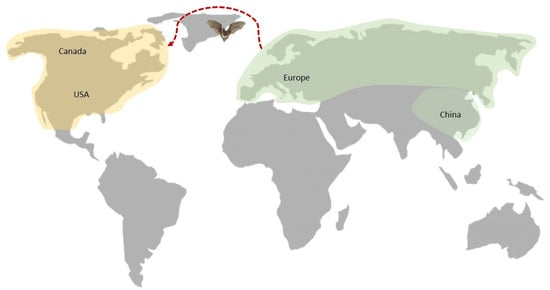
Figure 1
Open AccessProceeding Paper
YOLO-AppleScab: A Deep Learning Approach for Efficient and Accurate Apple Scab Detection in Varied Lighting Conditions Using CARAFE-Enhanced YOLOv7
by
Joseph Christian Nouaze and Jordane Sikati
Biol. Life Sci. Forum 2024, 30(1), 6; https://doi.org/10.3390/IOCAG2023-16688 - 29 Dec 2023
Abstract
Plant and fruit diseases significantly impact agricultural economies by diminishing crop quality and yield. Developing precise, automated detection techniques is crucial to minimize losses and drive economic growth. We introduce YOLO-AppleScab, integrating Content-Aware ReAssembly of FEature (
Plant and fruit diseases significantly impact agricultural economies by diminishing crop quality and yield. Developing precise, automated detection techniques is crucial to minimize losses and drive economic growth. We introduce YOLO-AppleScab, integrating Content-Aware ReAssembly of FEature (
(This article belongs to the Proceedings of The 2nd International Online Conference on Agriculture)
►▼
Show Figures
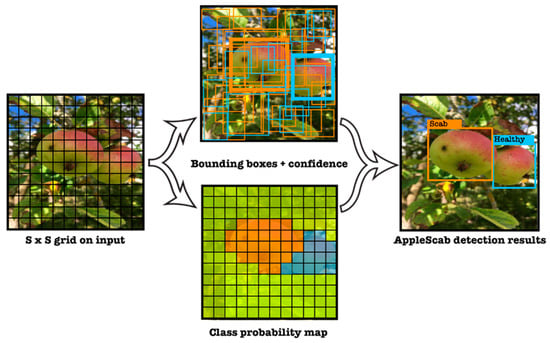
Figure 1
Open AccessProceeding Paper
Incidence, Species Distribution, and Antifungal Susceptibility of Candida Bloodstream Infections in a Tertiary Algerian Hospital
by
Assia Meradji, Stéphane Ranque, Fayza Bachtarzi, Nabil Mosbah and Tayeb Moulahem
Biol. Life Sci. Forum 2024, 31(1), 30; https://doi.org/10.3390/ECM2023-16684 - 26 Dec 2023
Abstract
Candida infections are the most frequent invasive fungal diseases. To date, few studies have been conducted on candidemia in Algeria. The aim of this study was to assess the incidence, species distribution, and antifungal susceptibility for Candida bloodstream infections. This prospective, monocentric study
[...] Read more.
Candida infections are the most frequent invasive fungal diseases. To date, few studies have been conducted on candidemia in Algeria. The aim of this study was to assess the incidence, species distribution, and antifungal susceptibility for Candida bloodstream infections. This prospective, monocentric study covered all cases of candidemia diagnosed in the ICU at Setif hospital in Algeria. Yeast isolates were identified using MALDI TOF. Antifungal susceptibility testing was performed using Sensititre YeastOne. The incidence rate was 7.03 cases per admission in the ICU. Five Candida species were isolated: C. albicans, C. glabrata, C. parapsilosis, C. tropicalis and C. pelliculosa. Overall, 78.6% of isolates were sensitive to all antifungals.
Full article
(This article belongs to the Proceedings of The 2nd International Electronic Conference on Microbiology)
Open AccessProceeding Paper
Isolation and Characterization of Agricultural Soil Bacteria with Biotechnological and Biological Control Potential Applications
by
Beatriz Meza-Manzaneque, Marta Pérez-Díaz, Elena G. Biosca and Belén Álvarez
Biol. Life Sci. Forum 2024, 31(1), 28; https://doi.org/10.3390/ECM2023-16683 - 26 Dec 2023
Abstract
Unsustainable agricultural practices eventually have an impact on soil conditions and microbiological diversity. To regain balance, ecologically sound strategies can be an alternative. In this work, a collection of bacteria was isolated from agricultural soil and characterized to evaluate their capacity for phosphorus
[...] Read more.
Unsustainable agricultural practices eventually have an impact on soil conditions and microbiological diversity. To regain balance, ecologically sound strategies can be an alternative. In this work, a collection of bacteria was isolated from agricultural soil and characterized to evaluate their capacity for phosphorus and iron biofertilization, exoenzyme production, and biocontrol of several phytopathogenic fungi. Bacterial identification pointed out to a majority of Bacillus spp. along with other several minority genera. Isolates globally displayed a high proportion of the biological activities tested, especially concerning production of hydrolytic enzymes. Inhibition on fungal growth was variable among the soil bacterial isolates by production of diffusible compounds and/or VOCs (volatile organic compounds). Evidence from this work provides promise for the application of soil bacteria to improve agricultural soil management and crop production.
Full article
(This article belongs to the Proceedings of The 2nd International Electronic Conference on Microbiology)
►▼
Show Figures

Figure 1
Open AccessProceeding Paper
The Contribution of Tribal Women Entrepreneurs to Long-Term Economic Growth: A Bibliometric Analysis and Prospects for Future Study
by
Sonam Prabhakar, Pawan Prabhakar, Suraj Kumar, Ashok Nimesh and Mamoni Banerjee
Biol. Life Sci. Forum 2024, 30(1), 9; https://doi.org/10.3390/IOCAG2023-16686 - 26 Dec 2023
Abstract
Tribal women entrepreneurship has gained significant attention in recent years as a means to empower women from indigenous communities and foster sustainable development within their societies. However, with the recognition of their unique skills, knowledge, and cultural heritage, tribal women are increasingly embracing
[...] Read more.
Tribal women entrepreneurship has gained significant attention in recent years as a means to empower women from indigenous communities and foster sustainable development within their societies. However, with the recognition of their unique skills, knowledge, and cultural heritage, tribal women are increasingly embracing entrepreneurship as a pathway to economic self-sufficiency and empowerment. Our research analysed bibliometric data from 2002 to 2023 to see how the field of study on tribal women entrepreneurs has evolved. This study looked at a wide range of factors, including publication details, authorship details, country of origin, and author-related keywords. The R studio Bibliometrix programme was used to make the visuals. The annual output of publications increased by 9.82% after the COVID-19 pandemic, and there was a notable increase in the number of publications on tribal women entrepreneurship. Possible causes include supportive technological development, a thriving environment for new businesses, and government initiatives. India and the United States have produced the most comprehensive studies of entrepreneurship followed by the United Kingdom, but researchers from all over the world have worked together on similar projects. This study has shown that there has been a significant increase in entrepreneurial research activity, as well as demonstrating the breadth and interdisciplinary character of this research. However, more work needs to be carried out to bring together scholars from different fields to examine how different organisations have impacted the study of tribal women entrepreneurs.
Full article
(This article belongs to the Proceedings of The 2nd International Online Conference on Agriculture)
►▼
Show Figures

Figure 1
Open AccessProceeding Paper
Can Precision Agriculture Be the Future of Indian Farming?—A Case Study across the South-24 Parganas District of West Bengal, India
by
Panchali Sengupta
Biol. Life Sci. Forum 2024, 30(1), 3; https://doi.org/10.3390/IOCAG2023-16680 - 26 Dec 2023
Abstract
Agricultural practices such as tilling, sowing, cropping, It’s duty but arvesting, and land-use patterns in any agrarian economy depend on climate. Therefore, any adverse climatic conditions can seriously affect the production or yield of crops. Increased temperature enhances the susceptibility of crops to
[...] Read more.
Agricultural practices such as tilling, sowing, cropping, It’s duty but arvesting, and land-use patterns in any agrarian economy depend on climate. Therefore, any adverse climatic conditions can seriously affect the production or yield of crops. Increased temperature enhances the susceptibility of crops to pests and various plant diseases. Weeds are also known to multiply rapidly and decrease the nutritive value of soil, negatively affecting crop production. Our present study is designed to address similar problems faced by the farming community in the South-24 Parganas district of West Bengal, India, and suggest several probable technological solutions. Importantly, West Bengal is included in one of the six agro-climatic zones. Major crops from this study site are rice, wheat, maize, jute, green gram, black gram, pigeon pea, lentils, sugarcane, pulses, rapeseed, mustard, sesame, linseed, and vegetables. Significantly, cultivable land area has decreased in comparison to the overall crop area in this region. Reduced interest in agriculture, irrigation problems, increased profit in the non-agricultural economy, and rapid conversion of agricultural land for commercial purposes (construction of plots, hatcheries for fishing practices), along with uncertainties associated with rainfall patterns and frequent cyclones, are matters of grave concern in this study area. Agricultural scientists, researchers, environmentalists, local bodies, and government organizations are suggesting alternatives to benefit farmers. Thus, precision agriculture or crop management is required to recognize site-specific variables within agricultural lands and formulate strategies for improving decision-making regarding crop sowing, appropriate use of herbicides, weedicides, and precision irrigation, along with innovative harvesting technologies. Thus, the present paper provides a vision for the farming community in our study area to overcome their traditional practices and adopt different techniques of precision agriculture to increase flexibility, performance, accuracy, and cost-effectiveness. Soil temperature, humidity, and moisture monitoring sensors could be beneficial. Precision soil management, precision irrigation, crop disease management, weed management, and harvesting technologies are the different modules considered for discussion in this paper. Machine learning algorithms, such as decision tree, K-nearest neighbor (KNN), Gaussian naïve Bayes (GNB), K-means clustering, artificial neural network (ANN), fuzzy logic system (FLS), and support vector machine (SVM), could prove helpful for progressive farmers. The use of AI-powered weeding machines, drones, and UAVs for rapid weed removal and the localized application of herbicides and pesticides could also improve the accuracy and efficiency of agriculture. Utilizing drones fitted with high-resolution cameras could help gather precision field images, proving to be quite helpful in crop monitoring and crop health assessment. Unmanned driverless tractors and harvesting machines using robotics integrated with data from GPS/GIS sensors or radars could also be considered an effective and time-saving option. Thus, machine learning, along with innovative agricultural technologies, could contribute to improving the livelihoods of the farming fraternity.
Full article
(This article belongs to the Proceedings of The 2nd International Online Conference on Agriculture)
Open AccessProceeding Paper
Evaluating the Resistance of Tomato Cultivars to Algerian Phytophthora infestans Genotypes under Controlled Trial
by
Sihem Belkhiter, Lyes Beninal and Zouaoui Bouznad
Biol. Life Sci. Forum 2023, 27(1), 58; https://doi.org/10.3390/IECAG2023-16676 - 25 Dec 2023
Abstract
Late blight is a destructive disease of solanaceous crops such as tomato (Solanum lycopersicum L.), caused by the Oomycete Phytophthora infestans (Mont.) de Bary. Late blight is generally controlled by fungicide applications, which quickly become ineffective due to the appearance of new
[...] Read more.
Late blight is a destructive disease of solanaceous crops such as tomato (Solanum lycopersicum L.), caused by the Oomycete Phytophthora infestans (Mont.) de Bary. Late blight is generally controlled by fungicide applications, which quickly become ineffective due to the appearance of new P. infestans genotypes that can overcome the resistance of improved tomato cultivars and cause total production losses. The aim of this study is to assess the resistance level of tomato cultivars under controlled conditions and inoculations were carried out on detached leaflets (cvs. Trakia, Saint Pierre and Marmande) using inoculums of the major P. infestans clonal lineages found in Algeria such as EU_13_A2 (n = 1), EU_23_A1 (n = 2) and EU_2_A1 (n = 1) (three replicates of each isolate). This investigation showed that the choice of resistant cultivars can help control late blight and provide economic and environmental advantages by reducing the use of inputs.
Full article
(This article belongs to the Proceedings of The 3rd International Electronic Conference on Agronomy)
►▼
Show Figures
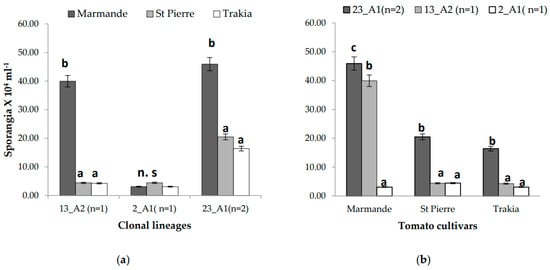
Figure 1
Highly Accessed Articles
Latest Books
E-Mail Alert
News
Topics



